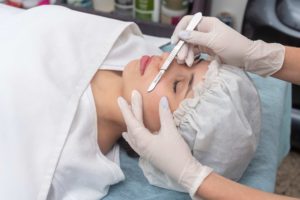
Dermal fillers have become a popular cosmetic procedure for individuals seeking to enhance their appearance and restore a youthful look. These non-invasive injections are designed to provide a simple and convenient way to achieve desired results, making them an attractive option for those seeking to rejuvenate their skin.
In this article, we will explore the advantages of dermal fillers and the different types available to help you understand why this procedure is becoming increasingly popular among people seeking to enhance their beauty and self-confidence. Discover how dermal fillers can help you achieve your desired appearance without undergoing major surgery or lengthy recovery periods.
Advantages Of Dermal Fillers
Dermal fillers are a popular cosmetic procedure for individuals seeking to enhance their appearance and restore a youthful look. The advantages of dermal fillers are numerous, making them a popular choice for those looking for a simple and convenient way to improve their appearance. Let’s dive into the advantages of dermal fillers in more detail.
- Non-invasive procedure: One of the most significant advantages of dermal fillers is that they are non-invasive. This means minimal downtime and recovery time compared to other cosmetic procedures. Additionally, since dermal fillers do not require general anesthesia, the process is relatively low risk and has a much quicker recovery time.
- Immediate results: Another advantage of dermal fillers is that they provide immediate results. After just one session, you can notice a noticeable improvement in your appearance. Furthermore, the effects of dermal fillers are long-lasting, providing you with a youthful and refreshed look for months to come.
- Customizable: Dermal fillers are also highly customizable, allowing you to target specific areas and achieve the desired results. With various filler options, you can find the perfect filler to meet your needs and achieve your desired appearance.
- Cost-effective: Lastly, dermal fillers are cost-effective compared to other cosmetic procedures. This means you can achieve your desired results with fewer sessions and at a lower cost. Additionally, the ability to target specific areas and choose from various filler options allows you to create a personalized plan that meets your particular needs and budget.
Different Fillers, Different Results
With the variety of filler options available, it’s essential to understand the different types of dermal fillers to determine which one is best for you. Let’s explore the different types of dermal fillers in more detail.
- Hyaluronic Acid Fillers: These are among the most popular dermal fillers. They are designed to add volume and hydration to the skin, making them an excellent option for those seeking to reduce the appearance of fine lines and wrinkles. Examples of hyaluronic acid fillers include Juvederm, Restylane, and Belotero.
- Calcium Hydroxylapatite Fillers: Calcium hydroxylapatite fillers are dermal fillers designed to add structure and volume to the face. This filler is ideal for individuals seeking to enhance the appearance of the cheeks, jawline, and temples. Examples of calcium hydroxylapatite fillers include Radiesse.
- Poly-L-lactic Acid Fillers: Poly-L-lactic acid fillers are a type of dermal filler designed to stimulate collagen production, resulting in a more youthful and refreshed appearance. This filler is ideal for individuals seeking to reduce the appearance of fine lines, wrinkles, and sagging skin. An example of a poly-L-lactic acid filler is Sculptra.
How Dermal Fillers Are Administered
Administering dermal fillers is relatively straightforward. With a qualified provider, you can achieve your desired results in just a few quick and easy steps. Whether you want to enhance your appearance or restore a youthful look, dermal fillers provide a simple and convenient way to achieve your desired results.
- Consultation: The first step in administering dermal fillers is to schedule a consultation with a qualified provider. During the consultation, the provider will discuss your desired results, evaluate your skin, and recommend the best filler.
- Preparation: Before administering the filler, the provider will clean the area to be treated and may apply a local anesthetic to minimize any discomfort. Sometimes, the provider may also provide a relaxing sedative to help you feel more at ease during the procedure.
- Administration: Once the area has been prepared, the provider will administer the dermal filler using a fine needle or cannula. The filler will be carefully injected into the skin, adding volume and reducing the appearance of fine lines and wrinkles. The process usually takes between 15 and 30 minutes and is relatively quick and easy.
- Aftercare: After the procedure, the provider will provide you with aftercare instructions to ensure that the area heals correctly. This may include avoiding certain activities, such as excessive exercise or exposure to the sun, and using ice packs to reduce swelling. The provider may also schedule a follow-up appointment to evaluate your results and address concerns.
Risks And Side Effects Of Dermal Fillers
As with any procedure, it’s essential to understand dermal fillers’ risks and side effects. Let’s explore dermal fillers’ potential risks and side effects in more detail.
- Pain and Discomfort: One of the dermal fillers’ most common side effects is pain and discomfort during and after the procedure. This can be caused by the needle or cannula used to administer the stuffing and the pressure of the filler as it is injected into the skin. However, this discomfort is usually minimal and can be managed with over-the-counter pain medications or a local anesthetic.
- Bruising and Swelling: Another potential side effect of dermal fillers is bruising and swelling in the treated area. This is a normal healing process and typically subsides within a few days. In some cases, the swelling can be quite noticeable, and you may need to avoid social or work-related activities until it reduces.
- Infection: While rare, infection is a potential risk to dermal fillers. This can occur if the injection site becomes contaminated with bacteria. To minimize the risk of infection, it’s essential to choose a qualified provider and to follow all aftercare instructions carefully.
- Allergic Reactions: Allergic reactions to dermal fillers are rare but can occur. Suppose you have a history of allergies or an allergic reaction to a cosmetic procedure. In that case, informing your provider and discussing potential risks before undergoing a dermal filler procedure is essential.
Takeaway
If you want to enhance your appearance and restore a youthful look, consider the many benefits of dermal fillers. With immediate results, customizable options, and a non-invasive procedure, dermal fillers provide a simple and cost-effective way to achieve your desired results.
So why wait? Schedule a consultation with Beauty Nurse Bre today and discover the advantages of dermal fillers! Together, you can explore the different types of fillers available and determine the best option for your needs. Don’t let fine lines and wrinkles hold you back any longer. Invest in yourself and your appearance today with the help of dermal fillers!





